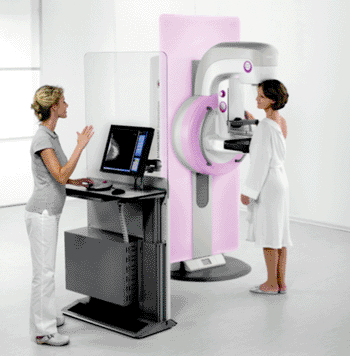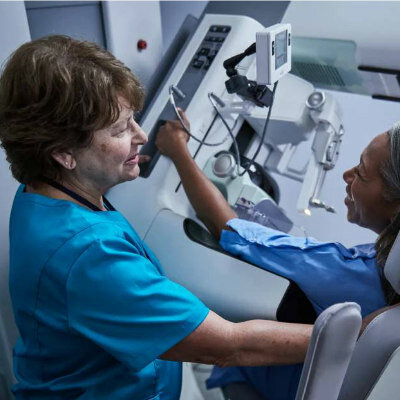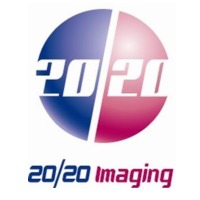Mammography System Reduces Radiation Exposure
By MedImaging International staff writers
Posted on 09 Jul 2013
Progressive image reconstruction software helps reduce patient radiation during mammography by as much as 30% compared to conventional systems.Posted on 09 Jul 2013
The MAMMOMAT Inspiration progressive reconstruction, intelligently minimizing exposure (PRIME) Edition uses a new reconstruction algorithm, which eliminates the need for the scatter radiation grid of conventional mammography systems, by identifying scatter-causing structures and recalculating the image, leaving intact the primary radiation upon which radiologists rely. The grid-free imaging technology can reduce radiation doses by up to 30% compared to the previous model, depending on the thickness of the patient’s breast tissue.

Image: The Siemens MAMMOMAT Inspiration Prime Edition (Photo courtesy of Siemens Healthcare).
Other feature of the system include Siemens image processing software, which provide high image quality and enhanced lesion conspicuity even in difficult cases, such as the presence of implants. Intelligent compression technology automatically selects the best of three available anode/filter combinations, individually adapting the dose rate to the breast characteristics. Another feature is MoodLight, an appealing design element that supports an inviting and calming screening environment. The MAMMOMAT Inspiration PRIME Edition is a product of Siemens Healthcare (Erlangen, Germany), and has been approved by the US Food and Drug Administration (FDA).
“It’s a huge improvement. Mammography is a screening where the patient comes in every year and might need additional images and things like that, so you want to try and keep the dose as low as possible,” said Jennifer Okken, clinical product manager for women’s health at Siemens Healthcare. “There’s really not much of a difference between the images at all, and the biggest improvement was on the imaging processing side, rather than adding a mechanical component.”
In digital X-ray breast imaging, the primary radiation supplies the information needed to provide the X-ray image, while scattered radiation is absorbed by special grids positioned between the breast and the detector. Unfortunately, since the scatter grids also absorb a portion of the all-important primary radiation, physicians must utilize a higher dose to obtain images of desired quality.
Related Links:
Siemens Healthcare














